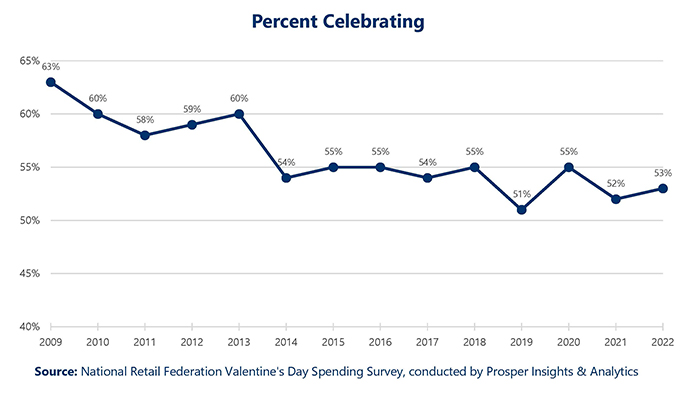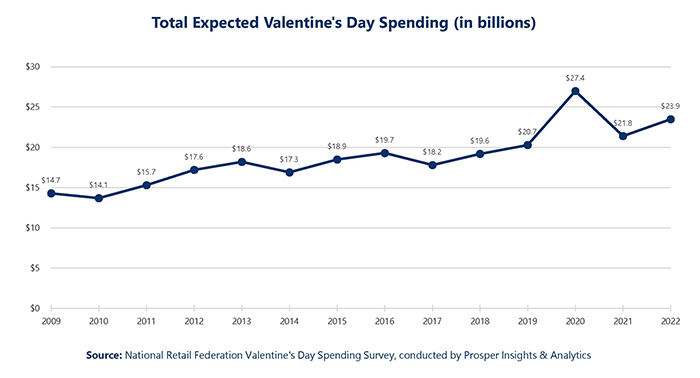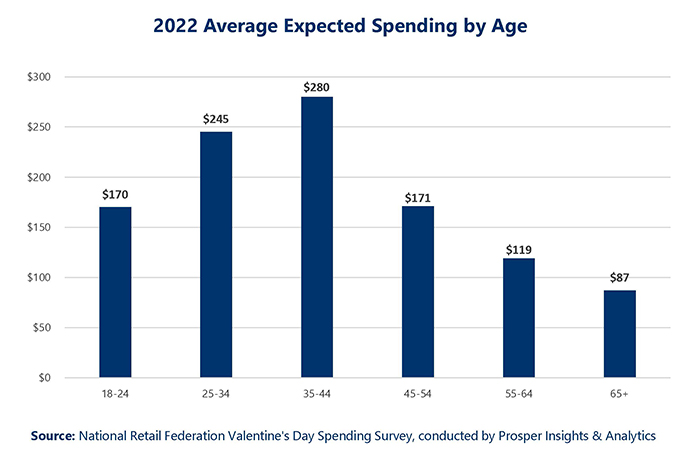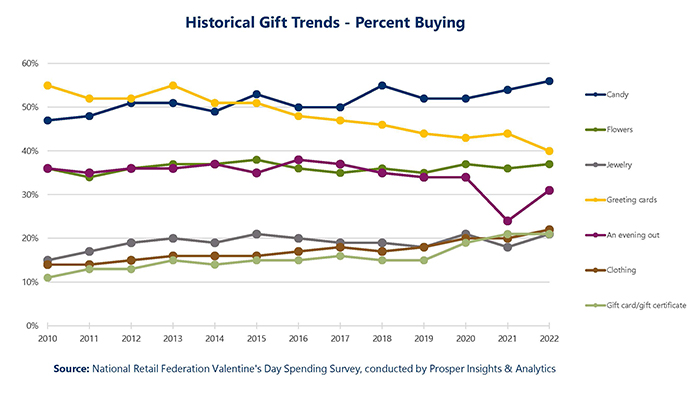- Navigator
- Featured Indicator
- Industry Analytics and Strategy
- Real Estate Development and Housing
- National
- Retail, Services, and Accommodations

Holiday and event spending can provide additional insights beyond traditionally collected retail metrics. The National Retail Federation (NRF) is a good resource for holiday and seasonal spending as it tracks consumer spending related to the winter holidays, Halloween, St. Patrick’s Day, the Super Bowl, tax season, and Valentine’s Day.
For February’s indicator we decided to take a look at NRF’s Valentine’s Day data and provide an overview of consumer trends.
What is the data telling us?
NRF has surveyed consumers about how they plan to celebrate Valentine’s Day annually for over a decade. NRF’s Valentine’s Day Data Center provides free access to this data, through online visualizations and downloadable data files.
Over half of Americans celebrate Valentine’s Day. The percent of people celebrating has been declining however, from 63% in 2009 to 53% in 2022.

Valentine’s Day is a $23 billion+ industry. Total spending in 2022 is estimated to be $23.9 billion. While this is a decrease from the $27.4 billion estimated in 2020, it is still a jump from 2021’s $21.8 billion.

Younger adults expect to spend the most on Valentine’s Day. People age 35-44 are expected to spend $280 on the holiday, followed by people age 25-34 ($245).

Candy is the most popular gift. Over half of people will give candy for Valentine’s Day. Other top gifts include greeting cards and flowers. Gift cards, clothing, and jewelry are the least popular gifts for this holiday.

For more information on Valentine’s Day spending and other holiday/seasonal trends, be sure to check out the NRF website.
Image Sources: Adobe Spark and Camoin Associates; Unsplash, @kellysikkema





